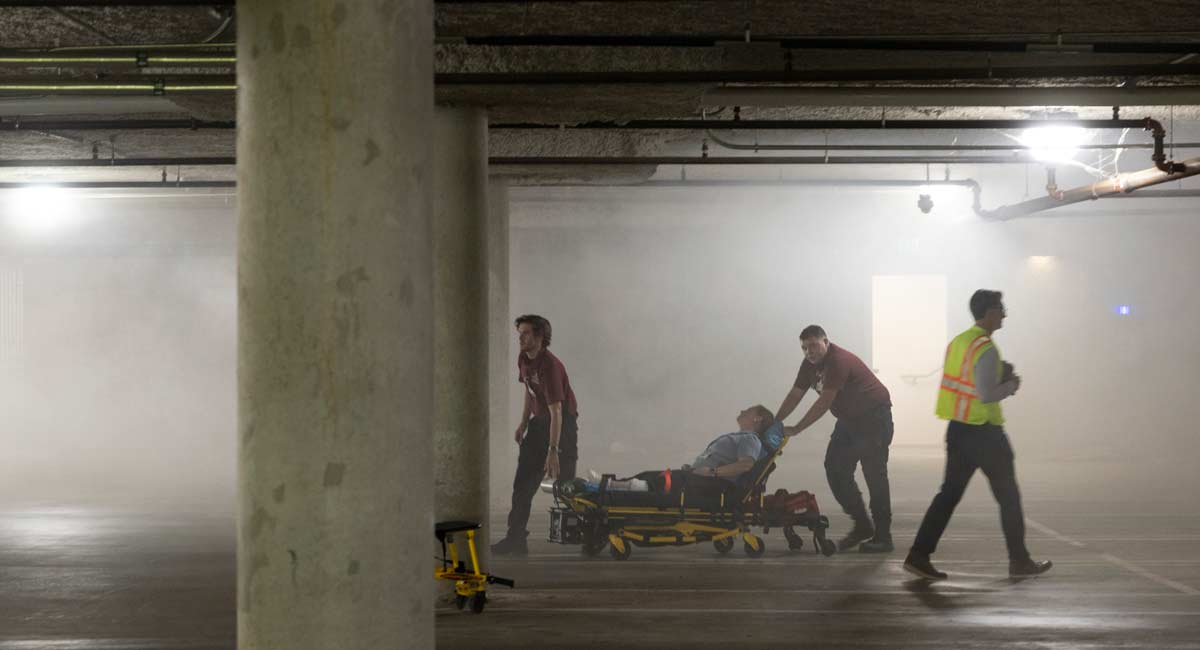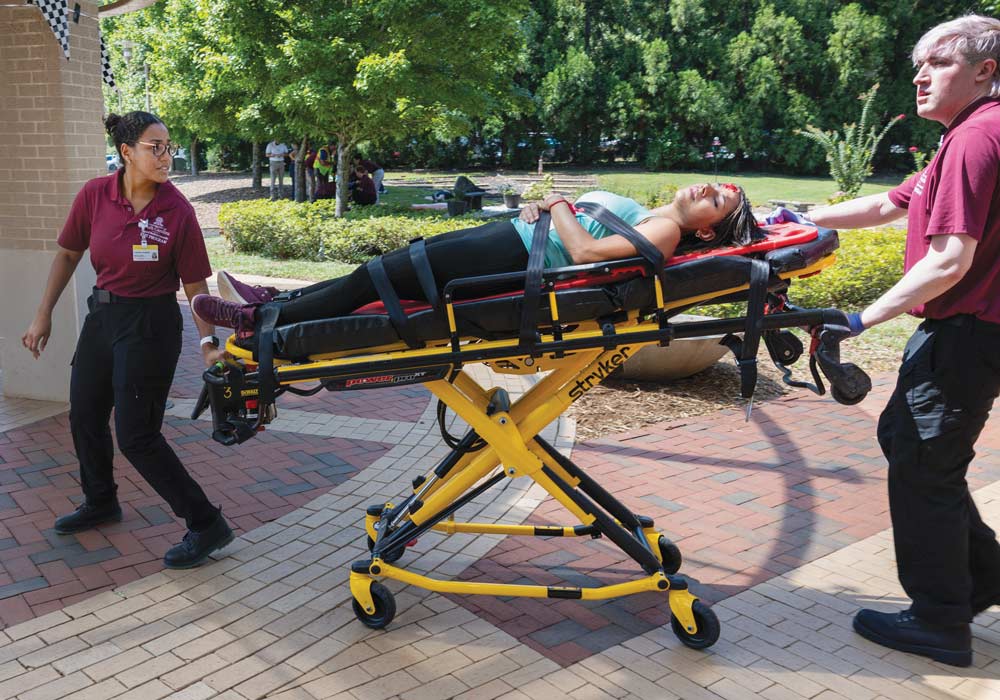Blake Jones was frantic, panicking, terrified. The 19-year-old USC sophomore was covered in blood and slime — one of more than 100 victims of a hazardous chemical spill on the USC School of Medicine Greenville campus. Firefighters sprayed the contamination area near the parking garage. First responders scrambled to help as many people as they could. Then a young woman grabbed Jones by the shoulder. “It’s going to be okay,” she said. “I’m going to take care of you.’”
Except here’s the thing: Jones’ injuries weren’t real — though he did a convincing job screaming for help.
Welcome to Disaster Day, an annual professional development event at which Greenville-area emergency workers, first responders and School of Medicine students tend to volunteer victims in a simulated emergency. In 2018, Jones was one was one of those volunteers.
“Part of my role was to be completely frantic at everything that happened,” he says.
“If you didn’t
know any better, you 100 percent would have thought a horrible event had just occurred,
and half of Greenville County’s emergency services had responded.”

They come out of this course well equipped to handle crisis calmly. They are the person you want to be on a plane with.
Calm during crisis
The School of Medicine Greenville was one of the first institutions in the United States to require EMT training in the first year of studies. Disaster Day is a chance for those first-year students to show what they have learned.
Close to 200 people participate, with 110 School of Medicine Greenville students joining professional caregivers from Emergency Medical Services and Prisma Health Simulation Center-Greenville. Rescue teams see triage patients under high-stress situations and perform basic interventions.
Prior to Disaster Day, medical students learn an array of skills, from how to provide oxygen and check vital signs to how to lift and move patients safely. They also go on ride-alongs with professional first responders to see those skills applied in real-life situations — and to watch first responders interact with patients.
“It requires knowing how to communicate succinctly,” says Elizabeth Mannion, a clinical assistant professor of emergency medicine. “It’s important to make sure that those we’re helping feel comfortable, heard and respected. Students gain an awareness of their community and the issues they’re facing.”
Those issues can be complicated. In South Carolina, for example, EMTs often assist patients who suffer from diagnosable ailments that escalated because they were unable to maintain or access a preventative care program. “If someone doesn’t know how to use their insulin but keeps ending up in the ER, physicians need to question how they can intervene with preventative medical solutions,” Mannion says.
But learning EMT skills in the classroom is different from encountering them under
real-world conditions — and the experience can be stressful. Students therefore undergo
a range of specific trainings, starting with a resiliency class before their first
ride-along. They also learn techniques for slowing their own breathing
when they encounter trauma.
And while Disaster Day is a culmination of their EMT training, the lessons carry over into all areas of medicine. Mannion emphasizes that students need to be well prepared no matter what branch of care they pursue. “Specialists have to treat emergencies too,” she says. “They come out of this course well equipped to handle crisis calmly. They are the person you want to be on a plane with.”
Operational medicine
Now a third-year medical student, Blake Jones credits his first Disaster Day experience with helping him decide to enroll at School of Medicine Greenville.
“It absolutely swayed my decision to come here,” he says. But it wasn’t the only factor. Jones, who is also an Army reservist, envisions a future in emergency medicine.
After medical school, he expects to transition to full-time active duty for his residency
and then do
at least four more years of service.
“I’m interested in the whole realm of operational medicine,” he says. “That’s medicine
that happens in
a deployed setting, oftentimes outside the resource-rich environment of a base or
a forward operation post. Basically, the most remote, austere EMS-type medicine you
can think of.”
The EMT training provided Jones an excellent springboard, allowing him to work with physicians at Prisma Health Greenville Memorial Hospital on a research project with Mannion, who also is an Army reservist. Her service includes a deployment to the Middle East under Operation Enduring Freedom.
“She has been a huge mentor to me,” Jones says. “Having a connection within the emergency medicine world that translates over to the Army world has been instrumental. I can’t imagine not having that. And the doors that has opened for me have been tremendous.”
Those same doors might never have opened were it not for the teamwork he saw at Disaster Day 2018. “I was impressed by the maturity that they showed, and the amount of competence that they had, as well as by their ability to give care, triage their patients and then talk them down,” he says. “They all worked together as a team so well. It’s like these people had known each other for years when, really, they just started taking classes together.”
